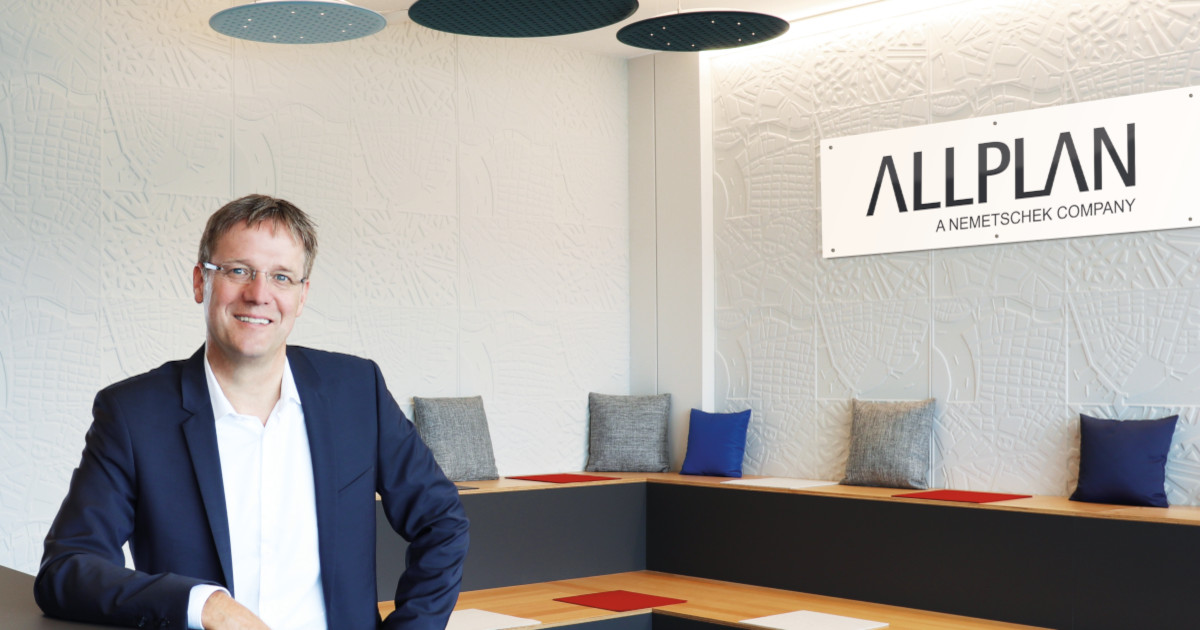An Interview with Dr. Detlef Schneider, ALLPLAN’s CEO
The digital revolution within the architecture, engineering, and construction (AEC) industry has been taking place for some time, with the pandemic accelerating progress. However, as with any revolution, there is still some resistance to change. Dr. Detlef Schneider, CEO of ALLPLAN, discusses why BIM is important for all involved in the building industry, and how ALLPLAN’s Design to Build approach benefits all AEC professionals.
What is holding back some designers from adopting BIM?
Detlef: While most professionals would agree that BIM and digitalization has a key role to play in addressing the inefficiencies of the AEC industry, there are still hurdles to overcome. We believe that some of the things that are holding designers back from moving to working with BIM are likely resistance to change, lack of knowledge of working in 3D, and the fact that many deliverables are still required in 2D.
The difficulty here is that many companies have already moved to BIM working methods and therefore can offer more services, integrate with their supply chain more effectively, and realize many benefits during the process itself as a result – and by not adopting these methods, these design firms get left behind.
Why is BIM an effective method for AEC professionals and projects?
Detlef: The change to a digital design environment is already well upon us, and we are seeing BIM moving from early design into the construction and manufacturing phase, and even to handover and operations. But it is not only a linear process – BIM also includes the data and information that is generated throughout, which can then also be considered in the earlier design phases. This “Design to Build” approach – which is also our company motto – supports data-driven decision-making for better results. We are also convinced that soon BIM will be the industry norm for delivering projects of any size. It can also play a part in achieving greater sustainability.
Why is a “Design to Build” approach important?
Detlef: The results are compelling. “Design to Build” with BIM means that the architect or engineer has all the tools and information they need to make the right decisions early on. For example, BIM enables highly accurate quantity take-off for understanding the costs or resource impacts; efficient modeling, collaboration, and visualization capabilities to provide transparent communication with other stakeholders and ensure the right information is available; and efficient iterations between the architects and engineers, owners, or other stakeholders.
“Design to Build” also means that a general contractor can leverage the BIM model all the way through construction, enriching it over the time with lean construction methodologies, site construction assets, or safety considerations – which can make a design office who uses BIM an attractive partner. Considering the buildability of the building or infrastructure asset in the digital model helps to avoid problems on the construction site, which in turn enhances an architects’ or engineers’ reputation.
What other benefits does BIM offer designers?
Detlef: We believe that the ultimate benefits will be the ability to collaborate on larger projects and retain the best talent. For example, the flexibility that cloud technology offers is now expected by many professionals. Using older or outdated methods of working is therefore a less attractive option for staff as well as project partners. Without these tools, design offices are potentially limiting the number of projects they can work on, the companies they can collaborate with to deliver them, and their access to the best industry talent.
To support this shift, this flexibility is now available for Allplan via Allplan Share. Team members are no longer tied to their desk – they can work on their projects from anywhere, at any time. The project data is safe and secured, while at the same time, team members can collaborate directly with the team. With Allplan Share, design firms have complete control on all user and administration rights, and there is no practical limit on the number of users and no IT infrastructure needed – just an internet connection.
And what else can we expect from ALLPLAN?
Detlef: ALLPLAN will continue to focus on the delivery of buildings and infrastructure projects with an emphasis on equipping customers to increase the efficiency in Design to Build workflows. The latest developments in our recently released 2022 version demonstrate we have continued to improve upon our comprehensive suite of tools for architecture and engineering, and our expansion to support the design of terrain, utilities, roads and bridges, that support building design and infrastructure projects worldwide. Naturally, we will be working on integrating Precast into Allplan following the merger of Precast Software Engineering into ALLPLAN. The design of quality buildings and infrastructure will always be a complex challenge, we are working to ensure that Allplan provides a solution for the needs of the AEC professional, both today and in the future.






